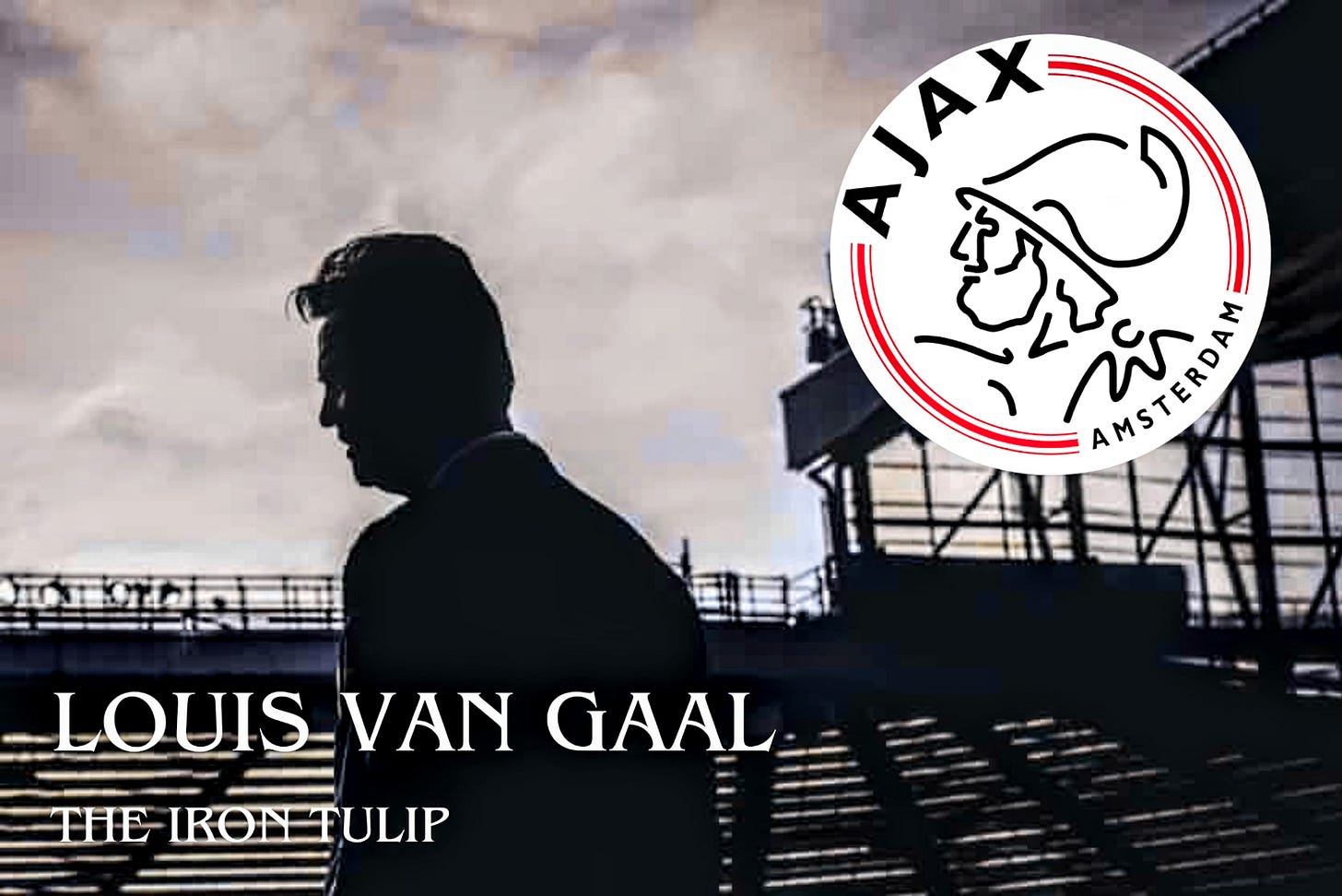In the pantheon of football tactics, few teams have left as enduring a legacy as Louis van Gaal's Ajax of the 1994-1995 season. This extraordinary side achieved a historic treble, claiming the Eredivisie, the KNVB Cup, and the UEFA Champions League. At the heart of this success was Van Gaal's tactical brilliance, underpinned by the timeless principles of Total Football.
Total Football: The Philosophical Foundation
The cornerstone of Ajax's dominance was the application of the Total Football philosophy. Rooted in Dutch football tradition, Total Football emphasises fluidity, positional interchangeability, and a shared understanding among players, enabling them to adapt seamlessly across roles. As a devout adherent to this philosophy, Van Gaal moulded his squad to epitomise these principles.
Employing a base 4-2-3-1 formation, Ajax displayed remarkable tactical fluidity. Depending on the game's demands, the team transitioned seamlessly into a 3-3-3-1, demonstrating a level of adaptability that few teams of the era could replicate. This tactical versatility allowed Ajax to control matches, dictating the tempo and neutralising their opponents’ strategies.
The Dutch Perspective on Space
The Dutch approach to football is deeply informed by the nation's spatial ingenuity, a trait shaped by the challenges of managing limited land resources. This philosophy, which blends abstract thinking and practical solutions, is mirrored in Ajax's tactical management of space.
Under Van Gaal, Ajax sought to maximise the pitch's dimensions offensively, stretching play to create opportunities, while defensively, they sought to compress spaces and disrupt opponents’ spatial dynamics. This meticulous approach, inspired by Holland's cultural relationship with space, became a defining characteristic of the team’s play.
As the saying goes, 'God made the world, but the Dutch made Holland.'
Four Pillars of Van Gaal's Game Model
Van Gaal’s philosophy revolves around four key aspects of play: offensive organisation, offensive transition, defensive organisation, and defensive transition. Each phase was meticulously planned and executed with precision.
Offensive Transitions and Ball Circulation
Van Gaal prioritised ball retention and purposeful circulation to exploit spaces. His system began with the goalkeeper, often acting as the first playmaker, initiating attacks with short passes. Players predominantly positioned themselves in central areas, creating overloads and forcing opponents to adjust their defensive shape, which opened up space for forward movements.
The circulation phase was not merely about keeping possession—it was designed to draw opponents out, destabilising their defensive structure and creating openings for incisive attacks.
Rapid Transitions: Exploiting Opponent Disorganisation
For Van Gaal, transitions were the game’s most pivotal moments. Ajax excelled in capitalising on the opposition’s disorganisation immediately after winning possession. This ability to switch rapidly from defence to attack highlighted their tactical intelligence and cohesion.
Defensive Compactness and High Pressing
Defensively, Van Gaal's Ajax epitomised collective effort and compactness. The team's defensive organisation was characterised by their proximity to one another, condensing the central areas to make it harder for opponents to penetrate.
Ajax’s pressing game was a cornerstone of their success. The team employed a high press to force mistakes, regaining possession in advanced areas. Forwards and midfielders coordinated their efforts to block passing lanes and apply pressure, ensuring opponents rarely had the time or space to build effectively.
The compact defensive shape extended vertically as well, with all players occupying a zone of roughly 20 metres. This forced opponents to either play wide or resort to less threatening areas, reducing the likelihood of conceding high-quality chances.
Structured Roles and Tactical Discipline
Van Gaal’s Ajax adhered to a system of clearly defined roles and responsibilities. Players were given specific tasks tailored to their positions, fostering consistency across all levels of the club. This disciplined structure, which even extended to fixed shirt numbers, ensured continuity from the senior squad to youth teams.
While Ajax excelled in pressing, Van Gaal balanced aggression with stamina considerations, ensuring players maintained positional integrity and avoided overextending themselves.
‘The main aim of pressure football, “the hunt”, was regaining possession as soon as possible after the ball was lost in the opponents’ half,’ Michels explained. ‘The “trapping” of the opponents is only possible when all the lines are pushed up and play close together.’
Legacy of a Tactical Masterpiece
Louis van Gaal’s Ajax of the 1994-1995 season was not just a team that won trophies; it was a tactical and philosophical revolution. Their fluidity in possession, compactness out of possession, and seamless transitions between phases of play set a benchmark for football excellence. The principles of Total Football were brought to life in stunning fashion, leaving a legacy that continues to inspire coaches and players around the world.
Final Thoughts
Van Gaal’s Ajax stands as a testament to the art of football as a collective endeavour. Their success was not just about individual brilliance but about a team operating in perfect harmony. This side demonstrated how tactical discipline, spatial awareness, and innovative thinking could converge to produce a style of play that transcends eras.
As we look back on the 1994-1995 season, Ajax’s journey reminds us that football is as much about creativity and strategy as it is about results—a beautiful game played with artistry and precision.







